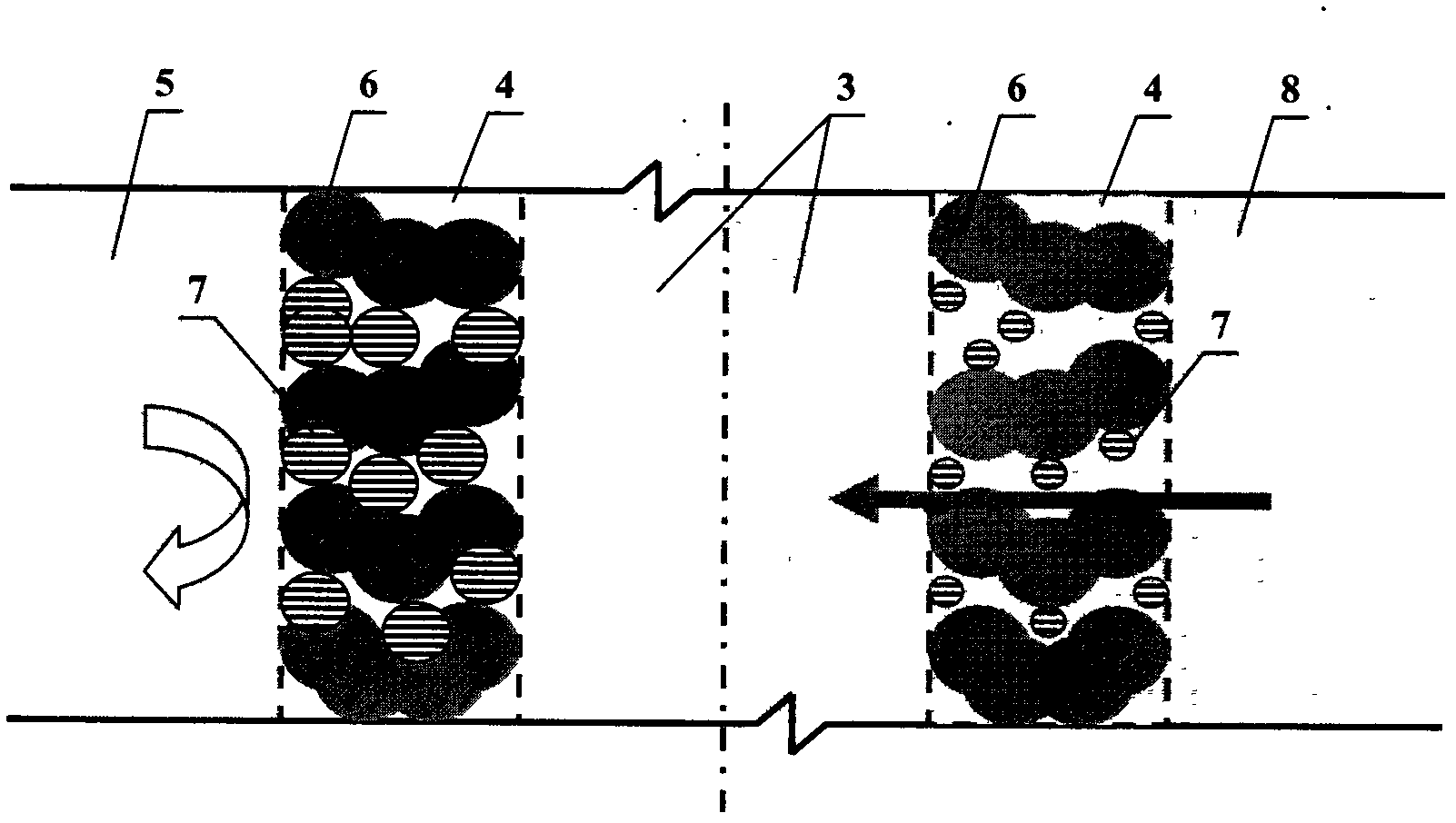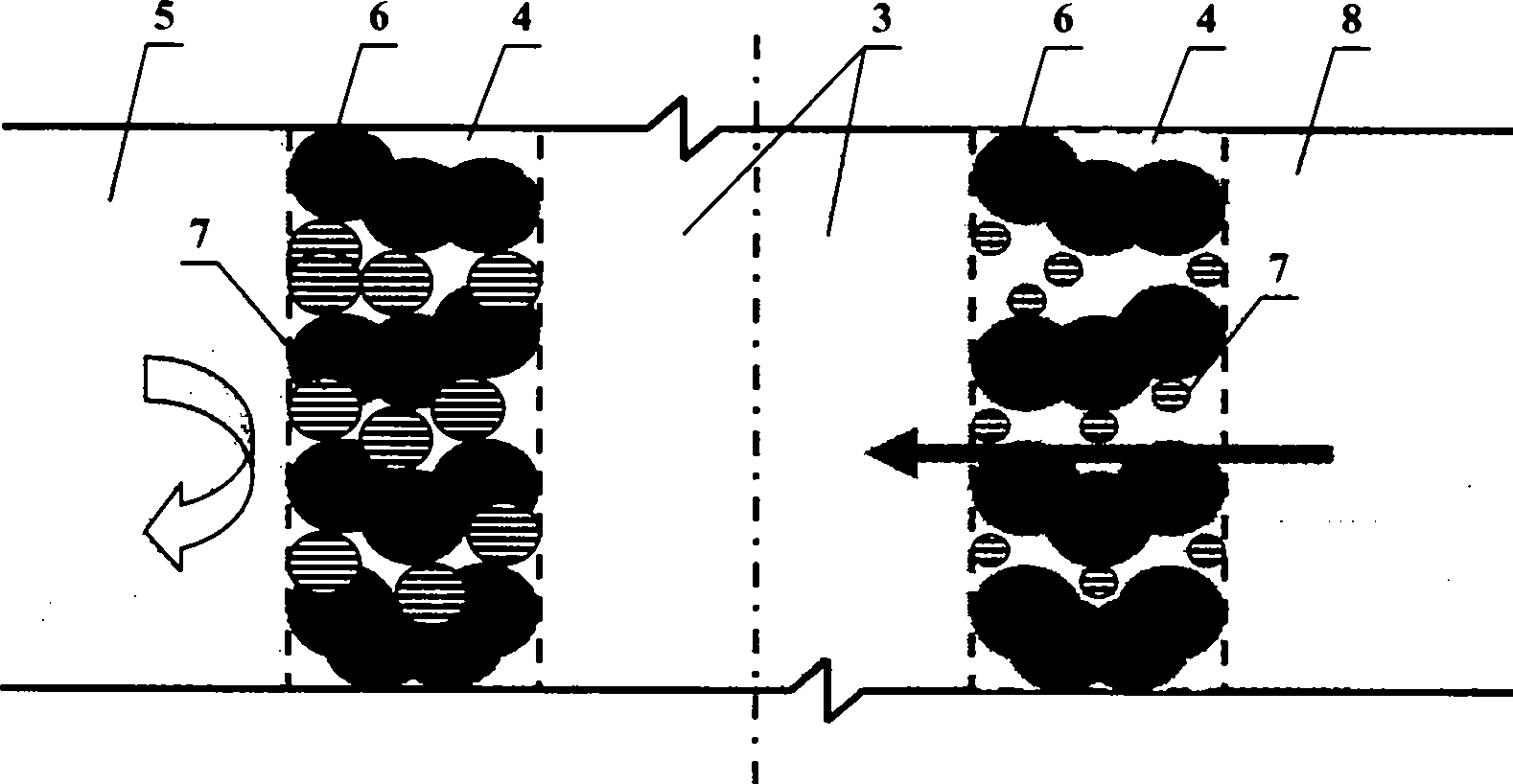Selective permeable reactive barrier technique for controlling seawater invasion
A technology of osmotic reaction wall and seawater intrusion, applied in the field of resources and environment, can solve the problems of waste of freshwater resources, freshwater flowing into the ocean, ecological impact in coastal areas, etc., and achieve the effect of preventing seawater intrusion and reducing the area of seawater intrusion
- Summary
- Abstract
- Description
- Claims
- Application Information
AI Technical Summary
Problems solved by technology
Method used
Image
Examples
Embodiment Construction
[0009] Combine below figure 1 and figure 2 The present invention is further described.
[0010] A pumping well (3) is established between the land (1) and the ocean (2), and the wall and bottom plate of the pumping well (3) adopt a selective permeable reaction wall (4). The selectively permeable reaction wall (4) is composed of a porous medium (6) and a salt-sensitive material (7). In the freshwater environment, the salt-sensitive material (7) absorbs water and expands, blocking the pores of the porous medium (6), and the freshwater (5) cannot enter the pumping well (3) through the selective permeation reaction wall (4); in the seawater environment In the process, the salt-sensitive material (7) shrinks due to syneresis, the pores of the porous medium (6) are connected, and the seawater (8) can enter the pumping well (3) through the selectively permeable reaction wall (4). The depth of pumping well (3) among the present invention is determined according to local hydrogeolo...
PUM
 Login to View More
Login to View More Abstract
Description
Claims
Application Information
 Login to View More
Login to View More - R&D
- Intellectual Property
- Life Sciences
- Materials
- Tech Scout
- Unparalleled Data Quality
- Higher Quality Content
- 60% Fewer Hallucinations
Browse by: Latest US Patents, China's latest patents, Technical Efficacy Thesaurus, Application Domain, Technology Topic, Popular Technical Reports.
© 2025 PatSnap. All rights reserved.Legal|Privacy policy|Modern Slavery Act Transparency Statement|Sitemap|About US| Contact US: help@patsnap.com



